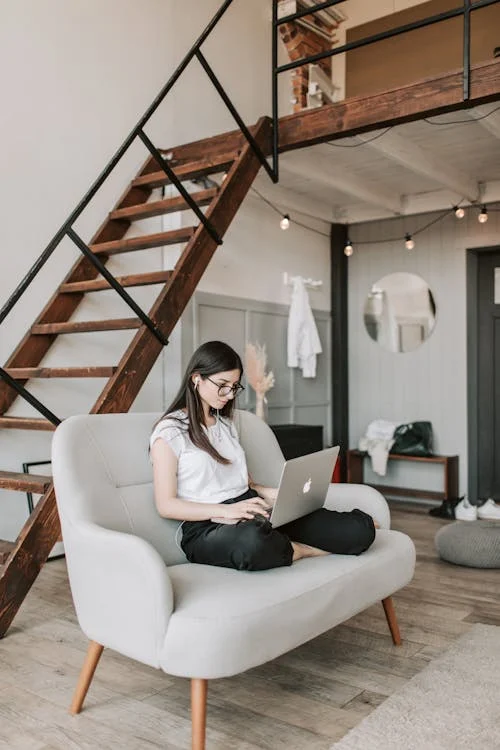Unlocking the Secrets of Anheihe: A Comprehensive Guide

we’ll explore the distinctive vision anheihe that lies behind each artwork, the artist’s eye. No matter if you’re just beginning your journey as a creative or an experienced professional knowing and cultivating this mindset is essential to producing work that not just pleases the eyes but also is a pleasure to the soul and mind.
In this thorough guide, we’ll explore the anheihe various design elements, examine the thinking processes of famous designers, and equip users with tools needed to enhance your own vision as a designer. Be prepared for an unforgettable knowledge that will change your perspective on design for the ages.
Aspects of Design: The Essence of Design Aesthetics
Design aesthetics are the basic concepts of aesthetic appeal. It’s more than just creating something that looks beautiful It’s about combining the principles of balance, contrast rhythm, emphasis, and harmony. Consider these principles as the elements that make up the visual world we live in.
Understanding Visual Balance
Balance is the most important aspect of design, allowing for a feeling of equilibrium. It can be symmetrical in which elements that are on opposite sides from a line are mirroring each other, or it can be asymmetrical that provides equilibrium through tension and contrast. The harmony of these opposite forces are what the designer aims to fulfil visually appealing equilibrium that is both pleasing and enthralling.
The Effect of Contrast
Contrast is an essential element of visual communication. It’s the contrast in components that attracts and draws the attention of the viewer. Dark and light as well as thin and thick lines geometric patterns against organic formsEvery type of contrast plays an important role to play within the narrative of visuals making clear important moments.
Making Crafts with Color
Color is a powerful element with the ability to stir emotions and create mood. Understanding the concept of color theory including using the wheel of color, complement as well as analogous hues, cool and warm palettes — is essential in harnessing this power of communication. It’s not about deciding on the colors, but rather using them with purpose and intention.
Rhythm and Flow in Design
Design rhythm is similar to musical notes for eyes. It guides the motion of designs, taking the eye from one part in the same design. This flow can be accomplished by repetition, alternation and progression, making sure that the viewer’s attention is directed in a seamless dance.
The Designer’s Thinking Process
Good design isn’t about the appearance of things but what they actually mean. Design solutions should begin with an grasp of the issue, then a strategic approach to decision-making that combines function and form effortlessly.
Form follows function
The famous design principle, formulated by the architect Louis Sullivan, states that the design’s shape should be based on its purpose or intended use. Before considering aesthetics, it’s crucial to identify what the design has to achieve, is it a logo which must be seen from a distance, or an online site that has to be simple to navigate.
Context is the Key
The design is not created in the absence of any other. It is influenced by contextthat is, historical, cultural as well as social and temporal. When one understands the context in the context in which a design is used, designers can design work that is meaningful and meaningful.
Audience-Centric Design
A good designer understands their clientele. Who the design is intended for will determine its style and material. When considering psychographics, demographics, and behaviour of the intended audience designers can assure that the design is relatable and understandable.
Iterative Process
It’s not always a straight line from concept to finalization. It’s a process that is constantly evolving, every draft is an opportunity to learn. Every iteration offers the chance to fine-tune, boost, and sometimes radically alter the way of doing things in response to new information and new discoveries.

Learn through Masters of Design
To expand your horizons as an artist, there’s no better option than to learn from the greatest of them all. We’ll look at the work and expertise of the legendary designers who left a lasting footprint on the field of design. From Paul Rand’s groundbreaking graphic design work to Dieter Rams influential industrial and product designs, their legacy is riches of inspiration and learning.
Paul Rand — The Father of Modern Graphic Design
Paul Rand’s minimalist, iconic logos for corporations such as IBM, ABC, and UPS established the standards for modern branding. Rand’s work isn’t just visually stunning, it’s also strategic that is frequently grounded in the psychology behind perception and the concepts of Gestalt.
Dieter Rams -“The Purist Industrial Designer”
Dieter Rams, a designer who embodied his “less but better” philosophy, pushed for practical and user-centric design. His influence extends beyond his renowned products from Braun and Vitsoe and is a thought process which can apply to all design disciplines. It’s about focusing on creating experiences that are meaningful for customers.
Sol LeWitt — The Conceptual Art Principle
Sol LeWitt’s wall art challenge the conventional concept of art-making. His work was focused on the concept or idea behind the work instead of the final work. The notion that the plan is the real art and that the execution steps can be executed by others can have profound implications for the designer’s perception of ownership and authorship.
Designing for emotional impact
Effective design is just as about generating feelings as about informing or convincing. We’ll look at ways to imbue any work you create with ability to influence your target audience. We’ll examine the role for storytelling within design, and the methods that can transform an idea into a sensual experience.
Making an Emotional Narrative
Design can tell a tale, and any good story can evoke emotions. When you inject your design with themes, characters as well as a story arc you can design a piece that is not just beautiful but also makes you feel good. The art of storytelling isn’t just a way to promote branding or advertising It can transform any design to an unforgettable and meaningful experience.
It’s all about the Senses in Design
Design is typically seen as visual media, but it is a multi-sensory experience. A well-designed poster could record the sounds of a performance; a brochure can evoke the taste of a dish that is new. The blending of all sensorial experiences in a design could result in more enthralling, engaging experiences.
UX and Emotional Design
Experience of the user (UX) style has grown in importance in the current digital age. It’s not only about how a site or application looks, but also how you feel when you interact with. Design that is emotionally oriented is a way of focusing on enjoyment, can transform an excellent user experience an exceptional one.
Techniques and Tools of the Design Trade
In order to create striking designs The ability to master the correct equipment and methods is crucial. In this article, we’ll deliver an outline of most important tools that a designer’s toolkit should have, starting with software like Adobe Creative Suite to freehand sketching and prototyping.
Digital Design with Adobe Creative Suite
Adobe Creative Suite is a universal tool in the world of design and digital. We’ll look at the different applications and their particular uses -for example, Photoshop to edit images, Illustrator for vector graphics, InDesign for layout design and other. We’ll grant some tips and tricks to maximizing your productivity using the powerful software.
Drawing is the art Sketching
Sketching is where many of the best ideas begin. It’s a fast and vivid method of getting ideas written down on paper. We’ll explore the role of sketching during the process of design from the initial brainstorming phase to the final prototyping. We’ll add guidelines on how to develop the sketching talent to convey your ideas efficaciously.
Prototyping along with Design Thinking
Prototyping is the first stage in the creation of an idea. It allows you to refine and test ideas, get feedback and continuously rise designs. We’ll explore various prototyping techniques and how they are integrated with designing thinking, which is a method that is centered around human-centered problem solving.
Staying Current with Technology
Tools for designing and the technologies which support them are continuously changing. Becoming aware of the latest developments is crucial for every designer. We’ll explore strategies for ongoing learning including online tutorials and courses to design workshops and conferences.
Design Ethics and Responsible
With the power of greatness comes a responsibility. In the final part of our series we’ll look at the ethical aspects of design. From the environmental impacts of packaging to the social consequences of user interfaces designers have a part to play in creating the future of our world.
Designing for sustainability
The sustainability issue is becoming more important and designers are at the frontlines of this fight. We’ll look at the ways that sustainable design can go beyond environmentally friendly materials and production techniques to cover the complete design lifecycle from design until disposal.
Accessibility and Design for All
Design should be available to all not just those who are wealthy. Accessibility concerns ensuring that the designs are able to be utilized by anyone of any ability. Inclusion-based design goes further and considers aspects like language, culture and technology. We’ll look at these concepts and the ways they can be applied in different design settings.
Ethical considerations in Visual Communication
The way we perceive design influences our view of the world. Be it via branding, advertising or editorial design ethical considerations are crucial. This article will examine the importance of visual communication as well as the obligations that go with it.
Integration of Art and Design in Society
Design isn’t only an aesthetic endeavor; it’s a social endeavor. Design and art can serve as the catalysts of social changes, expressions of culture identity, and indicators of progress and the past. We’ll examine the ways that designers can help boost the quality of society by their work.
Artivism along with Design Activism
In everything from posters for protest to social media campaigns design can be an effective instrument to engage in activism. We’ll look at the design role of ‘artivists who are with the knowledge to create awareness, spur action and influence change on important political and social issues.
The Community as well as Collaborative Design
Design does not have to be an isolated process. Design that is collaborative and community-oriented involves people from the end-user and stakeholder sides during the design process. We’ll explore the advantages of this approach that range from creating the sense of ownership and making designs better suitable for their communities of use.
Conclusion
The designer’s eye is not only focused on the things that are observed, but also what it’s like to see it. It’s an unique viewpoint that blends keen observation with an in-depth knowledge of the fundamentals and methods that drive good design. Through cultivating this perspective on the world around us, and using the tools and information that we have at our disposal we can design designs that are not just visually appealing, but as well stimulating in the mind and emotionally satisfying.
If you’re a designer who wants to be one it’s the commitment to continuous research and learning and an openness to new concepts and perspectives, as well as the willingness to think about the wider ethical and social consequences for our activities. It’s a thrilling and demanding idea, but one that will bring enormous rewards to those who choose to accept the challenge.
Remember that design is a journey not an endpoint. There’s every day something to discover and a fresh perspective to gain and an untold story to share in your work. Welcome to the sounds, sights, and textured materials that await your next design adventure. Create!



